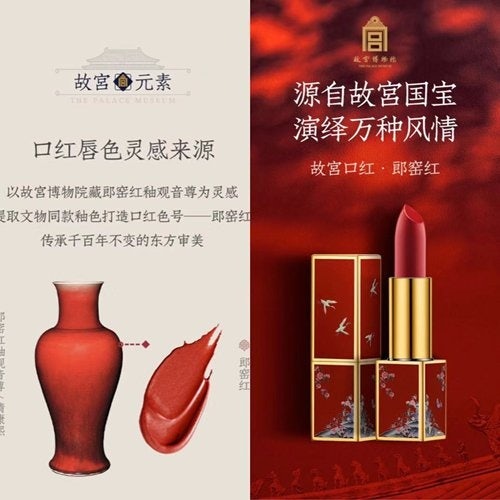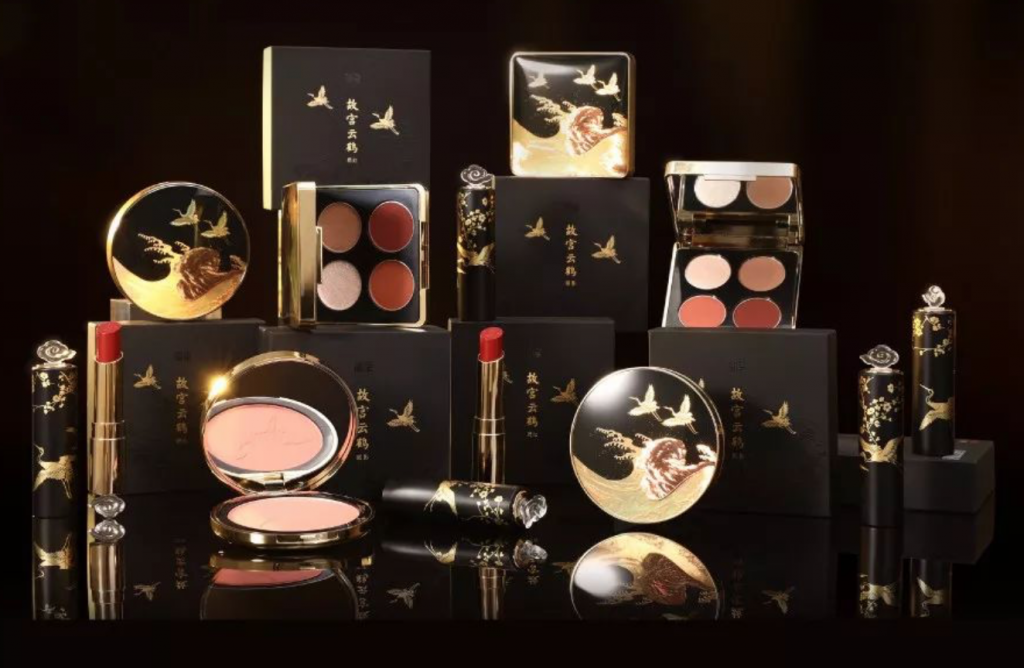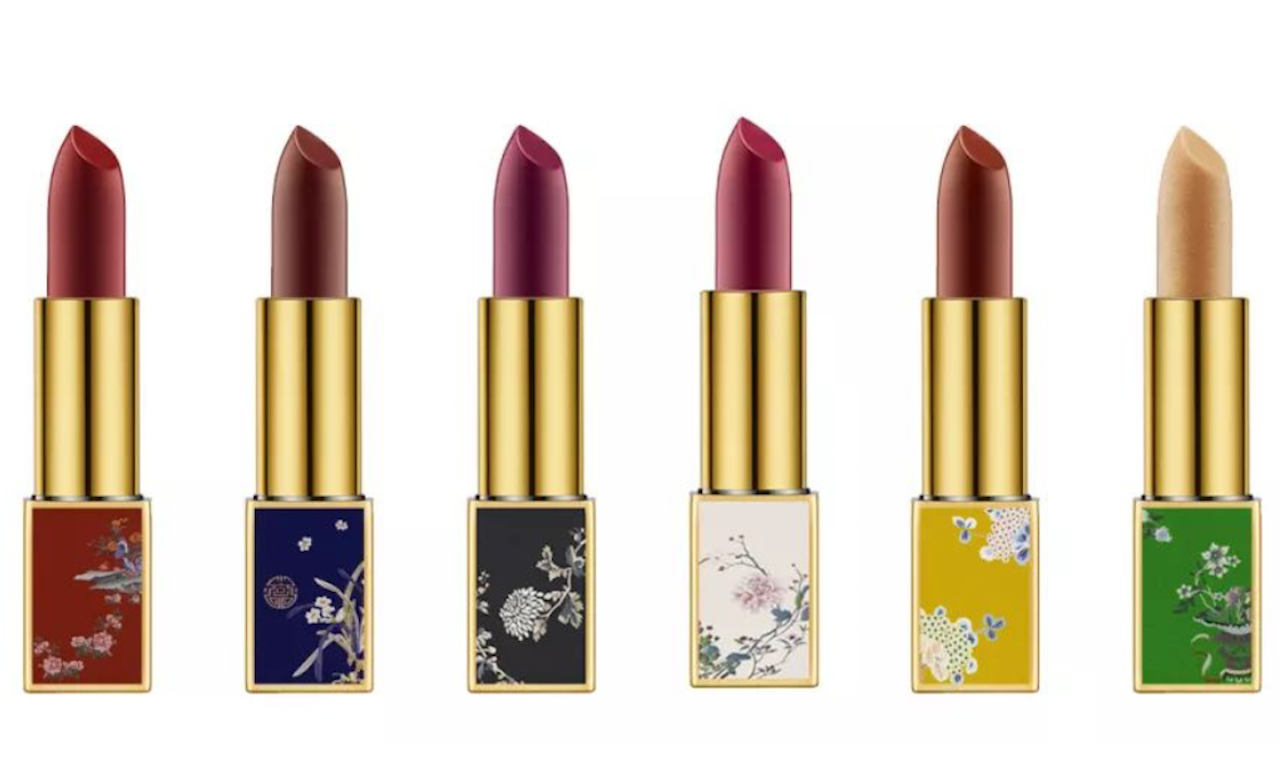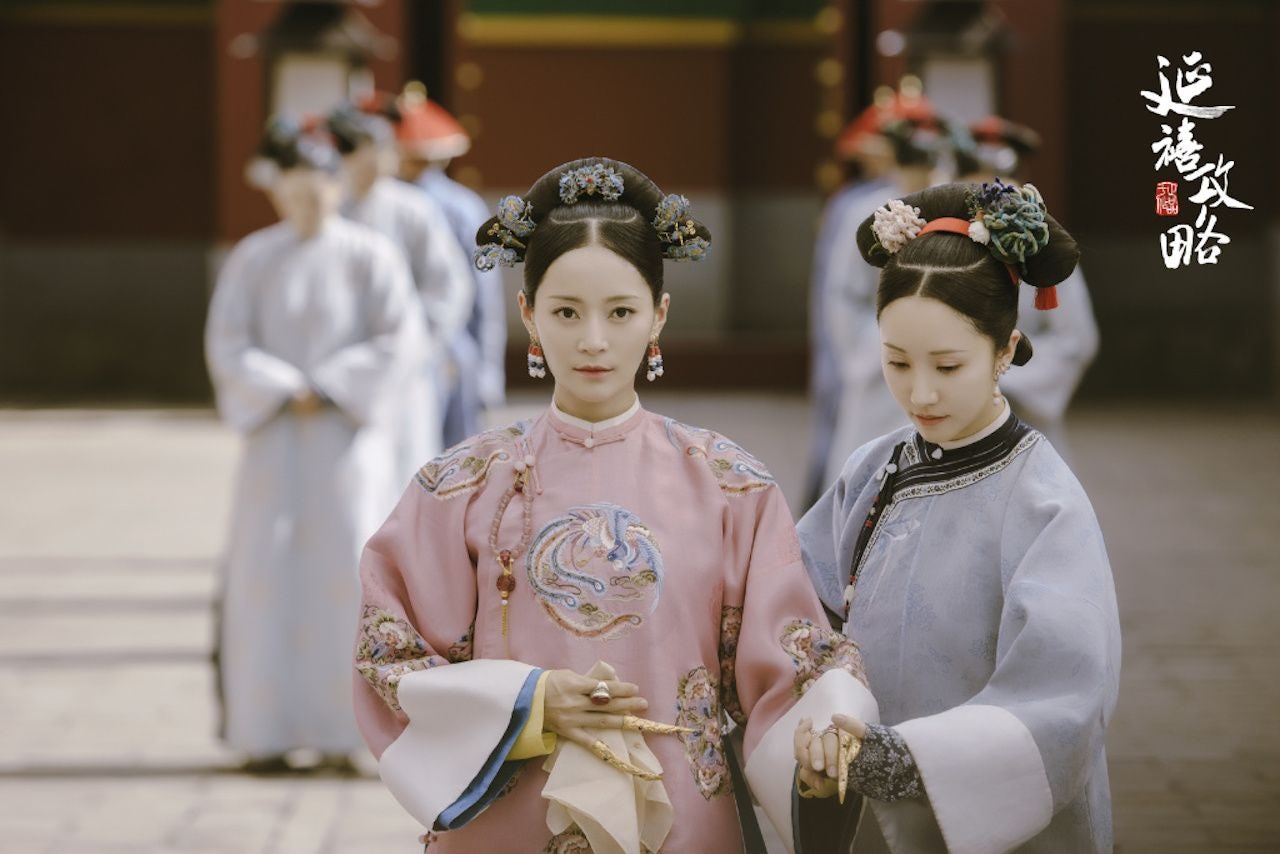On December 9, an announcement “Palace Museum Lipsticks are finally here!” went viral on Chinese social media platform WeChat, attracting more than 100,000 pageviews. Priced at RMB 199 (about 29 per lipstick) the lipsticks, available in six colors, received more than 1,000 orders in a single night.
Key to the swift success, apparently, is the fact that they are made by a local company, Beijing-based Bloomage Biotechnology Corp. Ltd., rather than imported like most cosmetics in China. Further boosting the national connection, the announcement noted that each of the six colors is inspired by an object in the Palace Museum collection; for example, the most popular lipstick, "Lang Yao Red" is inspired by an ancient ceramic bottle and already has more than 600 orders.

Many consumers showed their admiration towards this new collection: “It’s impressive to see Chinese style done right, the colors are trendy...I am excited to follow more homegrown brands,” commented one WeChat user. Another said, “I really want to get a museum gift haul and bring them abroad.” Some skeptical commenters questioned the quality of the goods: “Which factory made those products?” asked one Weibo user, “I will be applying them directly on my skin, need to take extra caution.”

Many consumers expressed interest in buying a lipstick collection from the museum after it launched a popular series of highly decorated adhesive tapes -- with Chinese motifs -- that buyers could attach to their own lipstick cases.
At that time, netizens were dissatisfied with the lack of Chinese aesthetic among foreign luxury brands, an opportunity now taken up by the Palace Museum. For luxury brands, the question is -- would the rise of Chinese brands cost them market share?
“Today Chinese consumers seem to reward local brands for interpreting its (national culture), in contrast to Western luxury brands' attempts to interpret that culture," said Tanguy Chen Laurent, the U.S. managing partner of Creative Capital. The recent Dolce & Gabbana scandal is a clear demonstration of a brand mistakenly interpreting orientalism (chopsticks and red lanterns) as being culturally relevant, and the company ultimately ended up having to pay the price in the form of a consumer boycott.


